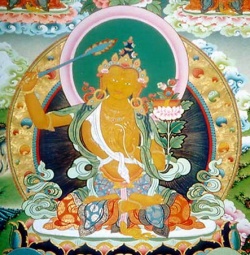Difference between revisions of "Anti-Lokayata school"
| Line 9: | Line 9: | ||
[http://www.sgilibrary.org/search_dict.php www.sgilibrary.org] | [http://www.sgilibrary.org/search_dict.php www.sgilibrary.org] | ||
[[Category:Buddhist Terms]] | [[Category:Buddhist Terms]] | ||
| − | [[Category: | + | [[Category:Anti-Lokayata school]] |
[[Category:India]] | [[Category:India]] | ||
Revision as of 13:29, 17 July 2013
Anti-Lokayata school
[逆路伽耶陀] (Skt; Jpn Gyakurokayada)
A non-Buddhist school in ancient India that is thought to have arisen in opposition to the Lokayata school. Both schools existed in Shakyamuni's time. The Lokayata school, also known as the Charvaka school, argued that people are made of earth, water, fire, and wind, and that they have neither a previous life nor a next life. Followers of the school obeyed the conventions and trends of the world, including public opinion, and expounded a materialist and hedonistic doctrine. In Shakyamuni's time, Ajita Kesakambala, one of the six non-Buddhist teachers, expounded such a doctrine . The Anti-Lokayata school taught that one should oppose the conventions of the world and tried to refute the Lokayatafollowers. The "Peaceful Practices" (fourteenth) chapter of the Lotus Sutra reads, "They [bodhisattvas] should not associate closely with non-Buddhists, Brahmans, or Jains, or with those who compose works of secular literature or books extolling the heretics, nor should they be closely associated with Lokayatas or Anti-Lokayatas."
